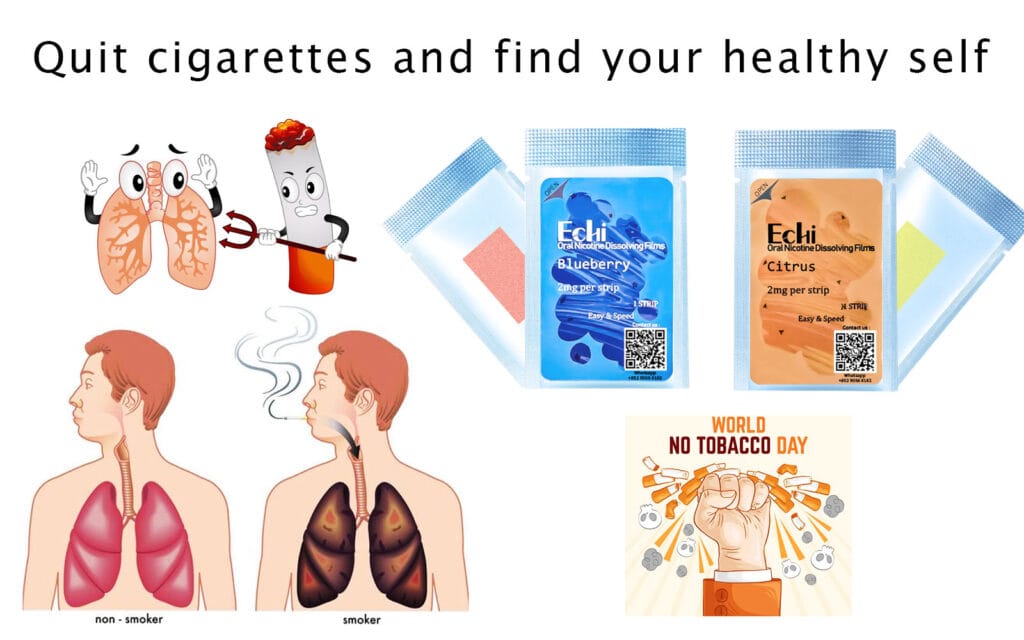1. Introduction
Quitting nicotine can be one of the most challenging but rewarding journeys for those dependent on nicotine products like cigarettes, vapes, or smokeless tobacco. The addictive properties of nicotine can make stopping feel overwhelming, but with the right tools, strategies, and support, you can successfully break free. This guide covers everything from preparation to long-term success tips, helping you navigate each step with confidence.
2. Why Quitting Nicotine Is So Challenging
Nicotine is a highly addictive substance, often compared to substances like heroin or cocaine in terms of its ability to create dependency. Here’s why quitting can be particularly challenging:
- Chemical Addiction: Nicotine changes brain chemistry, creating a dependency where the brain craves more nicotine to function normally.
- Behavioral Habits: Many users associate nicotine with daily routines, such as a cigarette with morning coffee or vaping during breaks, making it hard to separate habits from the substance.
- Withdrawal Symptoms: Once you quit, withdrawal symptoms can make it challenging to stay motivated, leading many to relapse in the early stages.
Understanding these challenges can help you prepare for what to expect and build a plan to overcome them.
3. Preparing to Quit Nicotine: First Steps
A successful nicotine quit journey begins with careful preparation. Here are the essential steps to take before starting:
3.1. Set a Quit Date
Choose a specific date to quit and mark it on your calendar. This helps you mentally prepare and gives you time to make necessary arrangements.
3.2. Identify Triggers
Identify the people, places, and situations that make you crave nicotine. Common triggers include stress, social gatherings, or specific routines. Write down your triggers so you can plan to avoid or manage them.
3.3. Inform Friends and Family
Tell friends, family, or coworkers about your plan to quit nicotine. Their support and understanding can make a significant difference, especially during tough moments.
3.4. Remove Nicotine Products
Clear your environment of all nicotine products, including cigarettes, vapes, and any accessories associated with nicotine use. This will reduce temptation and make it easier to commit to quitting.
4. Effective Methods for Quitting Nicotine

There are several evidence-based methods to help you quit nicotine. Finding the right one often depends on personal preferences and level of dependency.
4.1. Cold Turkey
Quitting “cold turkey” means stopping all nicotine use immediately. While challenging, this method works for some people, especially those who are highly motivated.
4.2. Nicotine Replacement Therapy (NRT)
NRT provides small amounts of nicotine to help reduce withdrawal symptoms. Common forms of NRT include nicotine patches, gum, lozenges, nasal spray, and inhalers. Many people find NRT effective for gradually reducing nicotine dependence.
4.3. Prescription Medications
Medications like Varenicline (Chantix) and Bupropion (Zyban) can help reduce nicotine cravings and withdrawal symptoms. These medications are typically prescribed by a doctor and are most effective when combined with counseling.
4.4. Behavioral Therapy
Counseling or therapy can address the behavioral and psychological aspects of addiction. Working with a therapist or joining a support group helps you develop coping mechanisms, set realistic goals, and stay accountable.
4.5. Alternative Nicotine Products
For those who may struggle with immediate quitting, transitioning to nicotine alternatives like nicotine pouches or oral films with lower nicotine levels may help manage cravings while reducing dependency over time.
5. Managing Nicotine Withdrawal Symptoms
Nicotine withdrawal symptoms can peak within the first few days after quitting and may last several weeks. Here are common symptoms and tips to manage them:
- Cravings: Stay busy, chew gum, or go for a walk. Distracting yourself can reduce the intensity of cravings.
- Irritability or Mood Swings: Practice relaxation techniques such as deep breathing or meditation to calm your mind.
- Difficulty Concentrating: Take regular breaks to stretch, walk around, and refocus your energy.
- Increased Appetite: Opt for healthy snacks like fruits, vegetables, or nuts to avoid overeating or gaining weight.
- Sleep Disturbances: Establish a consistent sleep routine and avoid caffeine in the late afternoon.
Knowing what to expect and how to manage these symptoms can significantly improve your chances of successfully quitting.
6. Building a Support System
A strong support system can be instrumental in helping you quit and stay nicotine-free. Here are some options for finding support:
- Friends and Family: Let loved ones know about your goal to quit, and don’t hesitate to ask for help or understanding during challenging moments.
- Support Groups: Many in-person and online support groups are available for those trying to quit nicotine. Hearing from others with similar experiences can boost motivation and provide valuable advice.
- Professional Counseling: Behavioral therapists and counselors specializing in addiction can provide coping strategies tailored to your needs.
- Quitline Services: Many countries offer free quitline services that provide counseling and resources for those trying to quit smoking or other forms of nicotine.
By building a network of support, you’ll have people to turn to when you need encouragement or accountability.
7. Maintaining a Nicotine-Free Lifestyle
Quitting nicotine is just the first step; staying nicotine-free requires ongoing commitment. Here are some tips to maintain a nicotine-free lifestyle:
7.1. Avoid Triggers
Stay mindful of situations or people that may tempt you to use nicotine again. Find healthier activities to replace old habits.
7.2. Reward Yourself
Celebrate milestones, like one week or one month nicotine-free, by treating yourself. Positive reinforcement can help reinforce your new lifestyle.
7.3. Focus on Health and Wellness
Engage in activities that benefit your overall well-being, such as regular exercise, meditation, or hobbies you enjoy. Physical and mental well-being often improve significantly after quitting nicotine.
7.4. Reflect on Your Reasons for Quitting
Remind yourself regularly why you decided to quit and the benefits you’re experiencing. Keeping a list of these reasons can help sustain motivation.
7.5. Seek Help If You Relapse
Relapse is common, and it doesn’t mean you’ve failed. If you slip up, reach out for support and refocus on your goal to quit. Learn from the experience and adjust your strategies as needed.
8. FAQs
1. How long does it take to overcome nicotine addiction?
Nicotine addiction varies by individual. Physical withdrawal symptoms typically subside within a few weeks, but psychological cravings can persist for months or even longer.
2. Can nicotine-free alternatives help in quitting?
Yes, nicotine-free alternatives can help some individuals manage the habit or ritual associated with nicotine use, making it easier to transition away from nicotine products.
3. Is it safe to quit nicotine cold turkey?
Quitting cold turkey is safe for most people but can be challenging due to intense withdrawal symptoms. Gradual reduction methods or NRT may be more manageable for heavy users.
4. Will quitting nicotine affect my weight?
Some people experience weight gain after quitting due to increased appetite. Choosing healthy snacks and staying active can help manage this.
5. What if I relapse during the quitting process?
Relapsing is a common part of the quitting journey. Treat it as a learning experience, refocus on your goals, and reach out to your support network for assistance.
For more support on nicotine alternatives or to explore products that aid in reducing nicotine dependency, visit SnuffMint or contact us via WhatsApp at +852-90568182.






